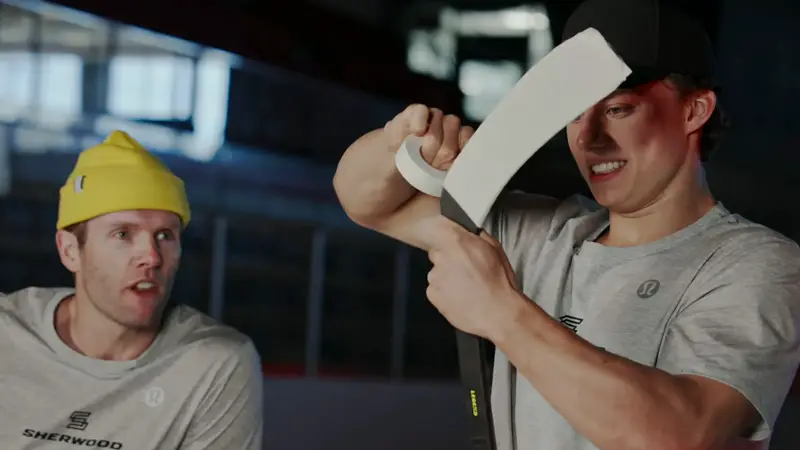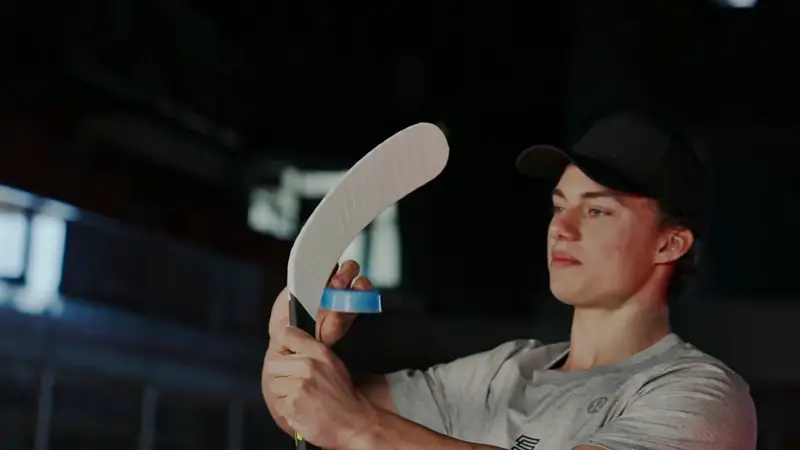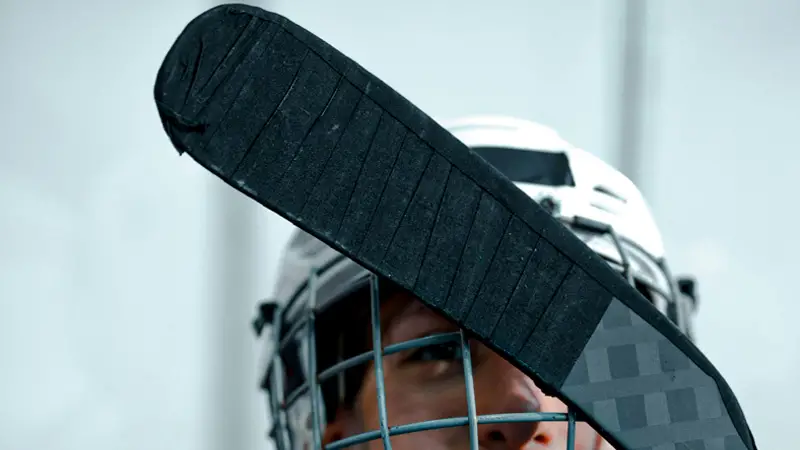From novice players stepping onto the ice for the first time to seasoned professionals battling for the Stanley Cup, hockey players share a common ritual: meticulously taping their hockey sticks
This seemingly simple act goes far beyond mere aesthetics, playing a crucial role in stick performance, puck control, and overall player confidence.
This comprehensive guide explores the intricacies of hockey stick taping, unraveling the reasons behind it, the techniques involved, and its significance in the game.
Evolution of Stick Taping: From Protection to Performance
The practice of taping hockey sticks has evolved alongside the sticks themselves. Initially, taping served a primarily protective function for wooden sticks.
The tape acted as a barrier against moisture from the ice, preventing splintering and extending the lifespan of the relatively fragile wood.
As composite sticks, crafted from materials like graphite, kevlar, and carbon, became the standard, the need for moisture protection diminished.
However, new reasons for taping emerged, shifting the focus from protection to performance enhancement.
The Why and How of Taping: Blade and Knob

Taping a hockey stick is a common practice among players, serving both functional and personal preferences. Understanding the reasons behind taping and the techniques involved can enhance a player’s performance on the ice.
Blade Taping: Enhancing Feel and Durability
The blade of the stick, the primary point of contact with the puck, receives the most attention when it comes to taping. Players meticulously apply tape to the blade for several key reasons:
- Crack Prevention: Composite sticks, while lighter and more responsive than their wooden predecessors, are more susceptible to cracking upon impact with pucks or other sticks. Taping the blade adds a layer of protection, reinforcing the stick and reducing the risk of breakage during intense gameplay.
- Puck Control: Perhaps the most significant reason for blade taping is its impact on puck feel and control. The tape creates a textured surface that enhances grip, allowing players to better receive passes, stickhandle with precision, and execute accurate shots.
- Cushioning: The tape also provides a subtle cushioning effect, absorbing some of the impact when receiving passes, resulting in a smoother, more controlled reception.
Knob Taping: Grip and Quick Retrieval
While the blade receives the most intricate taping, the top or knob of the stick also benefits from strategic taping, primarily for:
- Enhanced Grip: Taping the knob provides a secure grip for the top hand, crucial for maintaining control and stability during shooting and stickhandling. The top hand acts as an anchor point while the bottom hand slides up and down the shaft for optimal puck handling.
- Swift Retrieval: A well-taped knob aids in quickly picking up the stick if it falls to the ice during play. The added thickness creates a small gap between the stick and the ice, making it easier to grab and resume play swiftly.
Taping Techniques: A Personalized Art Form

The art of hockey stick taping is highly personal, with each player developing their own preferred techniques and patterns.
Some prefer a smooth, spiral wrap, while others opt for overlapping patterns or strategically placed strips for specific grip points.
The thickness of the tape, the amount of overlap, and the overall design can significantly influence puck feel and control, making it a crucial element of a player’s individual style.
Conclusion: The Enduring Significance of Stick Taping
Taping a hockey stick is more than just a pre-game ritual; it’s an integral part of the sport, impacting both the performance of the stick and the player’s ability to command the puck.
Whether for protecting the blade, enhancing grip, or facilitating quick retrieval, the carefully applied layers of tape represent a blend of practicality and personalization.
As hockey continues to evolve, the art and science of stick taping will undoubtedly remain a crucial element of the game, reflecting the individual style and performance needs of each player.





James Felix